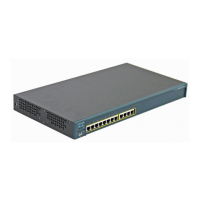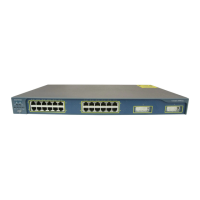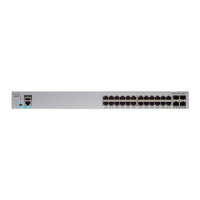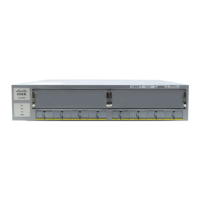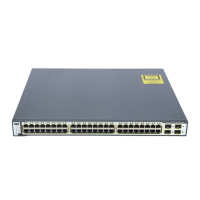2-5
Catalyst 4500 Series, Catalyst 2948G, Catalyst 2948G-GE-TX, and Catalyst 2980G Switches Software Configuration Guide—Release 8.2GLX
78-15908-01
Chapter 2 Using the Command-Line Interface
Command-Line Editing
permit Set IP Permit List
redirect Set ICMP redirect enable/disable
route Set IP routing table entry
unreachable Set ICMP unreachable messages
Console> (enable) set ip
Note The system repeats the command that you entered without the question mark (?).
To use the partial-keyword-lookup function, enter ? to display a list of commands that begin with a
specific set of characters. Do not insert a space between the last letter of the variable and the question
mark (?). For example, enter co? at the privileged prompt to display a list of commands that start with
co. The system displays all commands that begin with co, as follows:
Console> (enable) co?
configure Configure system from network
copy Copy files between TFTP/RCP/module/flash devices
Console> (enable) co
Command-Line Editing
The switch CLI supports a number of command-line editing keystrokes. Table 2-1 lists the keystrokes
that you can use when entering and editing switch commands.
Table 2-1 Command-Line Editing Keystrokes
Keystroke Function
Ctrl-A Jumps to the first character of the command line.
Ctrl-B or the Left Arrow key
1
1. The arrow keys function only on ANSI-compatible terminals, such as VT100s.
Moves the cursor back one character.
Ctrl-C Escapes and terminates prompts and lengthy tasks.
Ctrl-D Deletes the character at the cursor.
Ctrl-E Jumps to the end of the current command line.
Ctrl-F or the Right Arrow key
1
Moves the cursor forward one character.
Ctrl-K Deletes from the cursor to the end of the command line.
Ctrl-L; Ctrl-R Repeats the current command line on a new line.
Ctrl-N or the Down Arrow key
1
Enters the next command line from the history buffer.
Ctrl-P or the Up Arrow key
1
Enters the previous command line from the history buffer.
Ctrl-U; Ctrl-X Deletes from the cursor to the beginning of the command line.
Ctrl-W Deletes the last word typed.
Esc B Moves the cursor backward one word.
Esc D Deletes from the cursor to the end of the word.
Esc F Moves the cursor forward one word.
Delete key or Backspace key Erases the characters on the command line.

